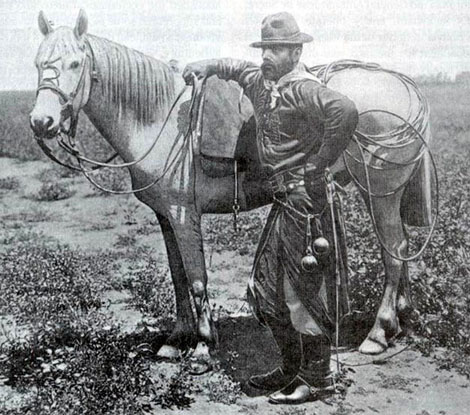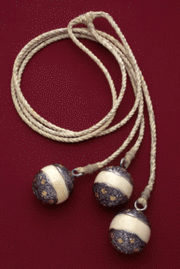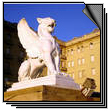Gauchos in Uruguay
South America's Cowboys

The gaucho plays an important symbolic role in the nationalist feelings of Uruguay. The word gaucho could be described as a loose equivalent to the North American "Cowboy". Like the North American cowboys, gauchos are generally reputed to be strong, honest, silent types, but proud and capable of violence when provoked. There is, perhaps, more of an air of melancholy about the classic gaucho than the classic cowboy.
Also like the cowboy, the gauchos were and still are proud and great horseriders. Typically, a gaucho's Horse constituted most of what he owned in the world. Gauchos were generally nomadic and lived on the pampas, Residing outside of the growing urban centres and farming settlements, these skilled riders lived off the land often willingly sharing their food with other travelers. Most gauchos were either criollo (South Americans of Spanish ancestry) or mestizo (of mixed Spanish and Native American blood).
The gaucho diet was composed almost entirely of beef while on the range, supplemented by yerba mate, an herbal tea-like drink rich in caffeine and nutrients. Uruguayan cooking draws influence from the simple but delicious recipes used in gaucho meals.
 Gauchos
dressed quite distinctly from North American cowboys, The typical gaucho
outfit would include a poncho (which doubled as saddle blanket and also
as sleeping gear), a facón (large knife), a rebenque (leather whip), and
loose-fitting trousers called bombachas, belted with a tirador, or a chiripá,
a piece of cloth used in the fashion--but not the function--of a diaper.
Several of these items were British imports into the area; for example,
bombachas were originally made in Turkey. In the wintertime, gauchos wore
heavy wool ponchos to protect against cold. Gauchos used boleadoras - Boleadoras
is a weapon consisting of two or three rock hard leather balls or round
rocks covered with leather, tied to a rope which gauchos used for hunting.
They hurled the weapon at the legs of the animal, preventing it from running
away. Here we see how they are hit on the floor to the rhythm of the drums,
performing Malambo with "boleadoras":
Gauchos
dressed quite distinctly from North American cowboys, The typical gaucho
outfit would include a poncho (which doubled as saddle blanket and also
as sleeping gear), a facón (large knife), a rebenque (leather whip), and
loose-fitting trousers called bombachas, belted with a tirador, or a chiripá,
a piece of cloth used in the fashion--but not the function--of a diaper.
Several of these items were British imports into the area; for example,
bombachas were originally made in Turkey. In the wintertime, gauchos wore
heavy wool ponchos to protect against cold. Gauchos used boleadoras - Boleadoras
is a weapon consisting of two or three rock hard leather balls or round
rocks covered with leather, tied to a rope which gauchos used for hunting.
They hurled the weapon at the legs of the animal, preventing it from running
away. Here we see how they are hit on the floor to the rhythm of the drums,
performing Malambo with "boleadoras":
Leave a Comment
|

